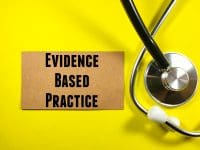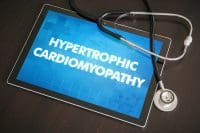Nurses and Suicide Risk
Nurses have been at risk for suicide since at least as far back as we have studied using data collected by the Center for Disease Control and Prevention (CDC) through the National Violent Death Reporting System (CDC, 2023; Davidson et al., 2020). These findings have been supported by additional studies (Davis et al., 2021; Olfson et al., 2023; Patrician et al., 2020). While specific data for nurse suicide during the pandemic are not yet available, the American Nurses Association (ANA, 2023) has expressed concern about the prevalence of suicidality and suicidal behavior throughout the public health crisis of the pandemic.
Prevention
The National Academy of Medicine included nurses as a part of a plan to reduce burnout and increase the healthcare workforce’s well-being (Stephenson, 2022). The American Academy of Nursing issued a call for action to address the issue of nurse suicide (Schimmels et al., 2023). In 2021, for the first time, the Future of Nursing 2020-2030 report commissioned by the National Academies of Sciences, Engineering, and Medicine (2021) contained a section dedicated as a call to action to address nurse suicide.
The U.S. Surgeon General (2022) advocates the use of a proactively safe system for screening mental health risks so that nurses may enter into the treatment they need. Given the sadly persistent stigma against seeking mental health treatment, ‘safe’ refers to a system that will allow a nurse to seek help anonymously, bypassing mandatory reporting requirements and ensuring that their manager is not informed of their need for treatment.
The American Hospital Association (2023) partnered with the Institute for Healthcare Improvement, under funding by the CDC, to produce a guidebook for health executives on how to address suicide prevention in the workforce. This guide also endorses the use of proactive safe screening for mental health risks. One way to do this is through the widely tested product available at low cost from the American Foundation of Suicide Prevention (AFSP, 2023) called the Interactive Screening Profile (ISP). For a nominal fee, professional organizations or health care institutions can partner with the AFSP to implement encrypted mental health screening. This product has been widely adopted and used successfully to help at-risk health professionals to engage in treatment (Norcross et al., 2018; Zisook et al., 2022).
The American Academy of Nursing (2021) recognizes the process of suicide prevention, when combined with critical incident and emotional process debriefings, as an “Edge Runner” model for replication. This term signifies an innovative and effective approach that has the potential to be adopted and replicated in various healthcare settings.
Risky Transitions
The findings from Davidson et al. (2021) highlight the significance of providing proactive psychological support to nurses during critical life transitions. These transitions include leaving work due to injury, illness, substance use disorder, other mental health conditions, or disciplinary action. These events can place immense stress on nurses, making them vulnerable to mental health conditions, including suicidal thoughts. What can you do?
- Check internal policies on ‘fit for duty’ and ‘diversion of medications’ to assure that they include psychological support.
- Ensure nursing representation on organizational committees responsible for developing these policies, which are often authored by lawyers, human resource professionals, risk managers, and pharmacists (Choflet et al., 2022; Melnyk et al., 2021).
- Encourage leaders in your organization to adopt a ‘treatment first’ approach to addressing substance use disorder. In this approach nurses retain their employment and benefits while on a leave of absence so that they can afford and have access to treatment (Choflet et al., 2022; Schimmels et al., 2023).
- Investigate whether psychological support is available for nurses who are experiencing discipline or need to leave their positions due to health concerns (chronic pain, illness, or injury), and assure that the process of securing support is included in leadership training and processes.
The Impact of Stigmatizing Licensure and Credentialing Questions
State boards of nursing have historically included questions regarding mental health in the interest of protecting the public from unsafe caregivers (Halter et al., 2019). However, it is now known that stigmatizing questions regarding mental health used for nurse licensure, renewal, discipline, and advanced practice nurse credentialing are harmful (Gold et al., 2016; Lorna Breen Heroes Foundation, n.d).
The Joint Commission (2020), US Surgeon General (2022), and the American Academy of Nursing (2021) have all issued statements encouraging state boards and healthcare organization credentialing committees to eliminate these questions from their processes (Schimmels et al., 2023). The stigma surrounding these questions reduces the likelihood of nurses seeking mental health treatment. The establishment of the Lorna Breen Act and Lorna Breen Foundation was prompted by a tragic incident in which a physician died by suicide rather than seek care for depression stemming from fear of what impact mental health treatment would have on licensure (Moutier et al., 2021; Lorna Breen Heroes’ Foundation, n.d).
Beyond personal tragedy, the public is safer when healthcare professionals with mental health illness are treated. Any action by healthcare organizations that discourages help-seeking is contrary to the public good. It would be simpler if the federal government could mandate removing intrusive mental health questions. However, professional boards are governed at the state level. Each board of nursing and every healthcare organization within that state need to evaluate internal policies and practices to eradicate the unlawful and stigmatizing questions. State level change is complex and will likely require a critical mass to actualize change. In support of this initiative, the Lorna Breen Heroes’ Foundation has created a task force to address the questions one state at a time until all states are American with Disabilities Act (ADA, 1990) compliant.
Additionally, state boards of nursing work in concert with a legal team whose responsibility is to protect the public by restricting the licenses of unsafe practitioners. The disciplinary and regulatory processes over the nursing profession in each state are governed through the attorney general’s office. Therefore, efforts for change should include advocacy and pressure from constituents toward the legal counsel along with the nursing boards. We congratulate the Ohio Board of Nursing for removing two questions that were ADA non-compliant from the list of renewal licensure questions in August of this year (2023). The questions that were removed are:
- Within the last five (5) years, have you been diagnosed with, or have you been treated for bipolar disorder, schizophrenia, paranoia, or any psychotic disorder?
- Within the last five (5) years, have you been admitted to a hospital or other facility for the treatment of bipolar disorder, schizophrenia, paranoia, or any psychotic disorder?
We look forward to the day when another question is removed, so that Ohio can be listed among the states that are no longer stigmatizing seeking mental health care upon licensure. The additional question of concern is:
“Since you filed your last renewal application, or if this is your first renewal since the date you filed your original license application, have you been addicted to, dependent on, diagnosed with addiction, dependence or substance use disorder related to, or treated for addiction, abuse, dependence or substance use disorder related to your use of alcohol or any chemical substance; or have you used any drugs that are illegal or were prescription drugs used by you with a legal, valid prescription” (Ohio Board of Nursing, 2023, p. 15).
A fourth question on the application focuses on legalities and court involvement during the two-year period prior to renewal. Asking for this information is compliant with the ADA because it may be connected to current impairment. What continues to be problematic is labeling an individual as “a mentally ill person.” The specific question is:
“Since you filed your last renewal application, or if this is your first renewal since the date you filed your original license application, have you been found to be a mentally ill person subject to hospitalization by court order, been found to be mentally incompetent by a probate court, or been found incompetent to stand trial by a court?” (Ohio Board of Nursing, 2023, p. 15).
The best practice is to ask no questions about mental health (Halter et al., 2019). For example, “Do you have a medical condition which in any way impairs or limits your ability to practice nursing with reasonable skill and safety?” focuses on the here-and-now and not historical information. It also does not discriminate between mental and physical health. Once the questions meet ADA compliance, the State of Ohio will be eligible to apply for certification through The Lorna Breen Heroes Foundation and receive public recognition.
Taking Action
Nurses in the state of Ohio are encouraged to familiarize themselves with the Lorna Breen Toolkit. This toolkit concisely describes how to evaluate licensure and renewal questions. It is available at https://drlornabreen.org/wp-content/uploads/2022/12/ALL-IN-Audit-Change-Communicate-Toolkit.pdf.
You may “take action” for nursing licensing and credentialing questions by:
- Addressing stigmatizing advanced practice nurse credentialing questions in your healthcare organization using the Lorna Breen Foundation toolkit as a guide (https://drlornabreen.org/wp-content/uploads/2022/12/ALL-IN-Audit-Change-Communicate-Toolkit.pdf). Once compliant, register your organization at: https://drlornabreen.org/removebarriers/
- Conducting a gap analysis of current state of your organization policies versus known strategies to holistically prevent suicide in your healthcare organization by using this toolkit: https://www.aha.org/suicideprevention/health-care-workforce/suicide-prevention-guide
- Using the gap analysis to form a task force and improve the resources available for nurses in your institution. This may include adding peer support struc-tures or safe mental health screening in collaboration with the AFSP.
- Using the resources your organization already has available to support your own mental health or the mental health of colleagues.
- Volunteering as a peer supporter if this program exists in your organization.
- Reviewing other mental health resources available through the American Nurses Association website.
In conclusion, nurses face a higher risk of suicide compared to the general public, and higher than other healthcare professionals. Nevertheless, there are measures we can take to address known workplace risks. Nurses can play an active role by advocating for improved organizational policies and credentialing processes. Additionally, leaders can take action by implementing proven methods for screening for mental health conditions, ensuring that nurses can seek care without fear of jeopardizing their careers. By working together, we can create a supportive environment that prioritizes the well-being of nurses and addresses this critical issue.
A gap analysis using the toolkit created by the American Hospital Association (2023) can reveal opportunities for suicide prevention that may be helpful at the local level. Advocacy by each of us is needed to change licensure and discipline questions at the state level. National organizations have already agreed that change is needed and given us a roadmap for success. Now is the time for each of us to act to save lives.
References:
American Academy of Nursing. (2021). Suicide prevention in nursing: Breaking the silence. https://www.aannet.org/initiatives/edge-runners/profiles/suicide-prevention-in-nursing
American Foundation for Suicide Prevention. (2023). Interactive screening program. https://afsp.org/interactive-screening-program/
American Hospital Association. (2023). Suicide prevention: Evidence-informed interventions for the health care work-force. https://www.aha.org/suicideprevention/health-care-workforce/suicide-prevention-guide
American Nurses Association. (2023). COVID-19 series results. https://www.nursingworld.org/practice-policy/work-environment/health-safety/disaster-preparedness/coronavirus/what-you-need-to-know/survey-series-results/
Americans With Disabilities Act (ADA) of 1990, Pub. L. No. 202-336, 104 Stat. 328 (1990).
Centers for Disease Control and Prevention. (2023). National violent death reporting system. https://www.cdc.gov/violenceprevention/datasources/nvdrs/index.html
Choflet, A., Barnes, A., Zisook, S., Lee, K.C., Ayers, C., Koivula, D., Ye, G., & Davidson, J. (2022). The nurse leader’s role in nurse substance use, mental health, and suicide in a peripandemic world. Nursing Administration Quarterly, 46(1), 19-28. DOI: 10.1097/NAQ.0000000000000510
Davidson, J.E., Proudfoot, J., Lee, K., Terterian, G., & Zisook, S. (2020). A longitudinal analysis of nurse suicide in the United States (2005-2016) with recommendations for action. Worldviews on Evidence-Based Nursing, 17(1), 6-15. DOI: 10.1111/wvn.12419
Davidson, J.E., Ye, G., Parra, M.C., Barnes, A., Harkavy-Friedman, J., & Zisook, S. (2021) Job-related problems prior to nurse suicide, 2003-2017: A mixed methods analysis using natural language processing and thematic analysis. Journal of Nursing Regulation, 12(1), 28-39. Retrieved from https://www.suicideinfo.ca/resource/job-related-problems-prior-to-nurse-suicide-2003-2017-a-mixed-methods-analysis-using-natural-language-processing-and-thematic-analysis/ DOI: 10.1016/S2155-8256(21)00017-X
Davis, M.A., Cher, B.A., Friese, C.R., & Bynum, J.P. (2021). Association of US nurse and physician occupation with risk of suicide. JAMA Psychiatry, 78(6), 651-658. DOI: 10.1001/jamapsychiatry.2021.0154
Gold, K.J., Andrew, L.B., Goldman, E.B., & Schwenk, T.L. (2016). “I would never want to have a mental health diagnosis on my record”: A survey of female physicians on mental health diagnosis, treatment, and reporting. General Hospital Psychiatry, 43, 51-57. DOI: 10.1016/j.genhosppsych.2016.09.004
Halter, M.J., Rolin, D.G., Adamaszek, M., Ladenheim, M.C., & Hutchens, B.F. (2019). State nursing licensure questions about mental illness and compliance with the Americans With Disabilities Act. Journal of Psychosocial Nursing, 57(8), 17-22. DOI: 10.3928/02793695-20190405-02.
Joint Commission. (2020). Statement on removing barriers to mental health care for clinicians and health care staff. https://www.jointcommission.org/-/media/tjc/documents/covid19/statement-on-removing-barriers-to-mental-health-care-for-clinicians-and-health-care-staff.pdf
Lorna Breen Heroes’ Foundation. (n.d.). Remove intrusive mental health questions from licensure and credentialing applications. https://drlornabreen.org/wp-content/uploads/2022/12/ALL-IN-Audit-Change-Communicate-Toolkit.pdf
Melnyk, B.M., Hsieh, A.P., Davidson, J., Carpenter, H., Choflet, A., Heath, J., Hess, M., Lee, P., Link, T., & Marcus, J. (2021). Promoting nurse mental health. American Nurse Journal, 16(1), 20-23. https://www.myamericannurse.com/promoting-nurse-mental-health/
Moutier, C.Y., Myers, M.F., Feist, J.B., Feist, J.C., & Zisook, S. (2021) Preventing clinician suicide: A call to action during the COVID-19 pandemic and beyond. Academic Medicine 96(5), 624-628. DOI:10.1097/ACM.0000000000003972
National Academies of Sciences, Engineering, and Medicine. (2021). The Future of nursing 2020-2030: Charting a path to achieve health equity. Washington, DC: The National Academies Press. DOI:10.17226/25982.
Norcross, W.A., Moutier, C., Tiamson-Kassab, M., Johg, P. Davidson, J.E., Lee, K.C., Newton, I.G., Downs, N.S., & Zisook, S. (2018). Update on the UC San Diego Healer Education and Assessment and Referral (HEAR) Program. Journal of Medical Regulation, 104(2), 17-26.
Ohio Board of Nursing. (2023). Forms and guidelines. https://nursing.ohio.gov/licensing-and-certification/forms-and-guidelines
Olfson, M., Cosgrove, C. M., Wall, M. M., & Blanco, C. (2023). Suicide risks of health care workers in the US. JAMA, 330(12), 1161-1166.
Patrician, P.A., Peterson, C., & McGuinness, T.M. (2020). Suicide among RNs: An analysis of 2015 data from the National Violent Death Reporting System. American Journal of Nursing, 120(10), 24. DOI:10.1097/01.NAJ.0000718624.25806.3f
Schimmels, J., Groh, C., Neft, M., Wocial, L., Young, C., & Davidson, J. E. (2023). American Academy of Nursing Expert Panel Consensus Statement on leveraging equity in policy to improve recognition and treatment of mental health, substance use disorders, and nurse suicide. Nurs Outlook, 71(3), 101970.
Stephenson, J. (2022). National Academy of Medicine outlines plan to curb burnout, bolster health workforce well-being. JAMA Health Forum, (3)10. DOI:10.1001/jamahealthforum.2022.4549
US Surgeon General. (2022). Addressing health worker burnout https://www.aha.org/suicideprevention/health-care-workforce/suicide-prevention-guide
Zisook, S., Doran, N., Downs, N., Lee, D., Nestsiarovich, A., & Davidson, J.E. (2022). Healthcare provider distress before and since Covid-19. General Hospital Psychiatry, 79, 180-182. DOI:10.1016/j.genhosppsych.2022.08.005
































1 Comment. Leave new
Thank you so much for addressing this topic. It is often overlooked. We need to care for ourselves and our nursing colleagues.